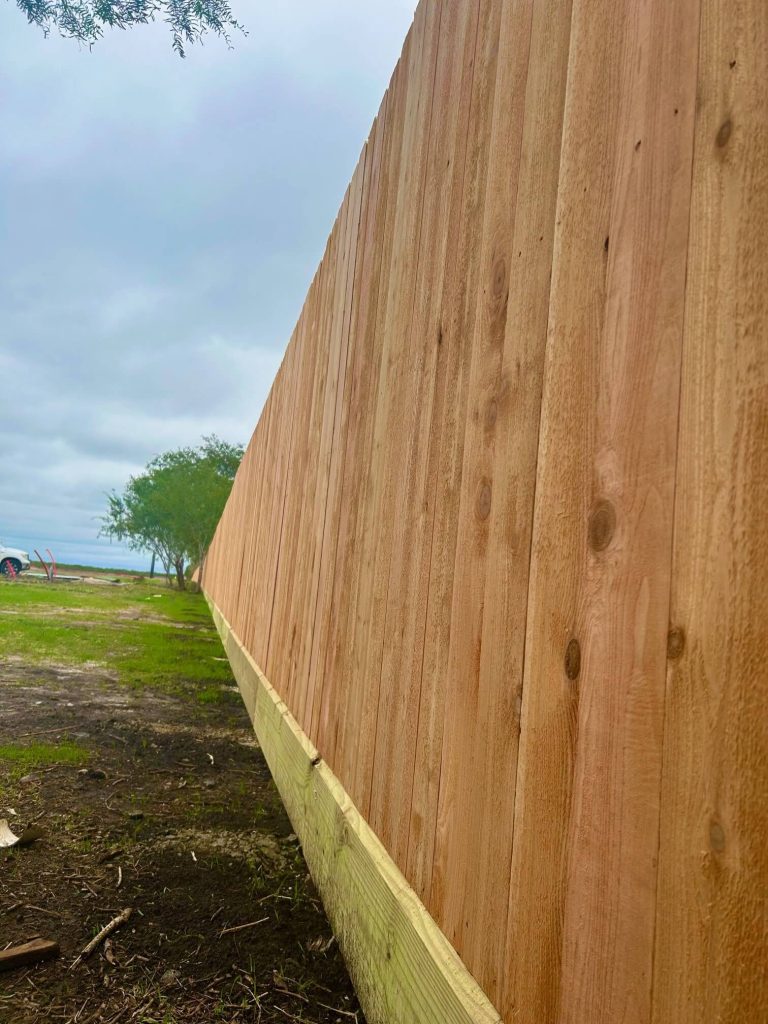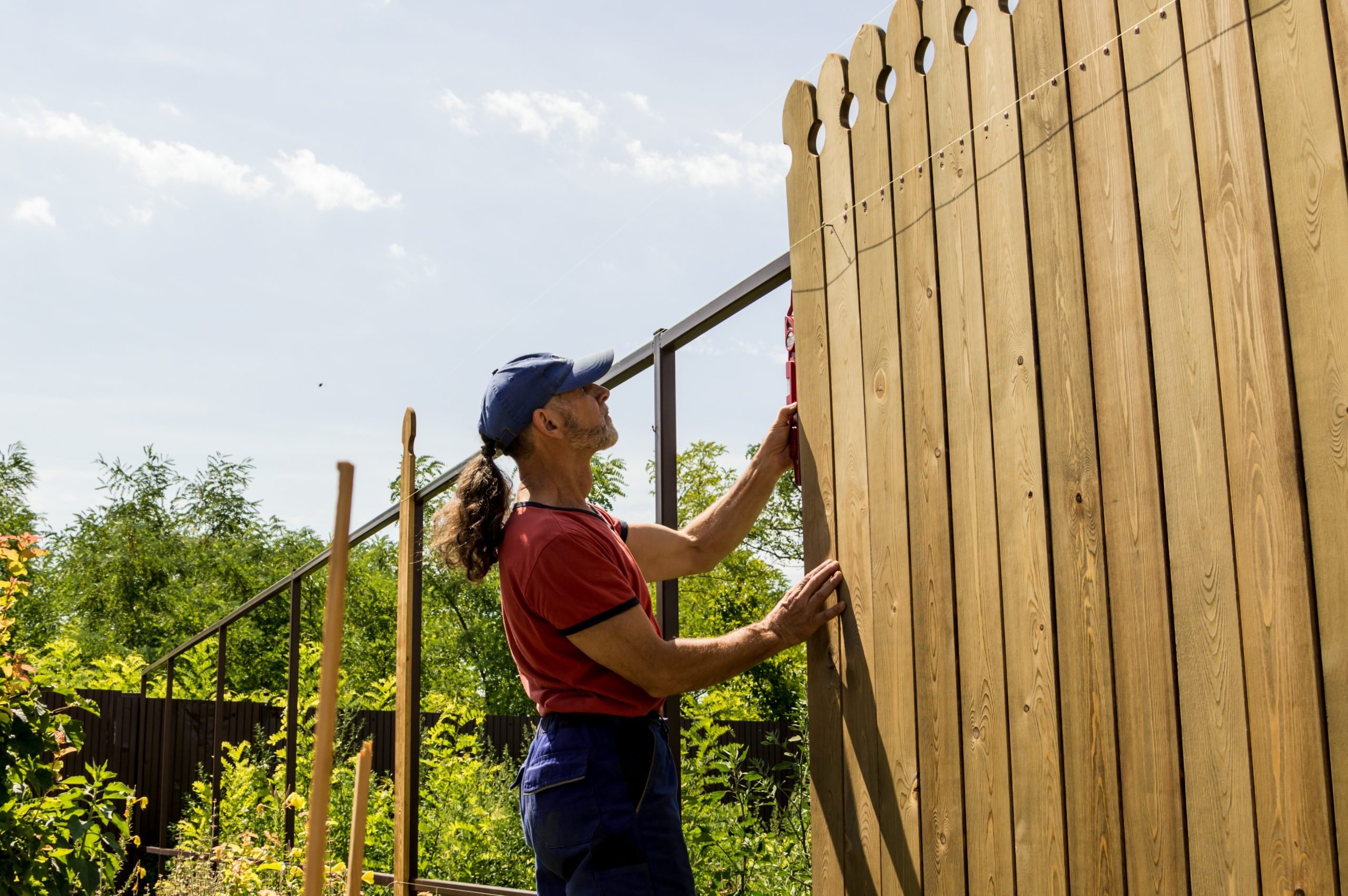How Gadsden Fence Helps You Understand Local Regulations
How Gadsden Fence Helps You Understand Local Regulations
Blog Article
The Ultimate Checklist for Effective Fence Installment Jobs
When you're preparing a fence installment job, it's important to have a clear strategy in position. Begin by defining your function and goals, whether it's for personal privacy or safety (fence company gadsden al). Recognizing regional regulations can conserve you time and headaches later on. From there, choosing the appropriate materials is essential for both toughness and aesthetic appeals. There's even more to take into account before you break ground. Allow's check out the steps that will certainly assure your job is a success
Define Your Objective and Objectives

Research Local Laws and Permits
Exactly how do you guarantee your fence setup goes smoothly? Start by looking into neighborhood guidelines and licenses. Every area has particular laws concerning fence-- elevation, product, and placement can vary commonly. Talk to your neighborhood zoning workplace or structure department to understand what's required in your neighborhood.You could need a license prior to you dig, especially if you're near home lines or energies. Stopping working to adhere to laws can lead to fines or also needing to take down your fence.Also, think about house owners association (HOA) regulations if you reside in a community with one. They often have added standards that you'll need to follow.
Choose the Right Products
When choosing materials for your fencing, consider toughness and exactly how they'll hold up against the aspects. You'll additionally wish to strike a balance in between aesthetic appeals and performance to ensure your fencing looks great while offering its function. Putting in the time to select the appropriate products can make all the distinction in the long life and look of your fence.
Product Sturdiness Factors To Consider
As you pick materials for your fencing, it's vital to evaluate their durability, considering that different options can significantly impact the long life and upkeep of your installation. Wood, while cosmetically pleasing, calls for routine therapy to fend off rot and bugs. On the various other hand, plastic uses remarkable resistance to fading and fracturing but can be extra expensive upfront. Metal fences, like light weight aluminum or functioned iron, offer stamina and longevity, but they may need regular corrosion protection. Consider your regional climate also; extreme climate can affect product efficiency. Inevitably, choosing the ideal durable product will certainly save you time and cash in the long run, guaranteeing your fence stands solid versus the elements and reduces upkeep efforts. Select wisely!
Visual and Functional Balance
While you might prioritize longevity when selecting fence materials, attaining a visual and functional balance is equally important. Believe concerning how your selection matches your home's style and the bordering landscape. Wooden fences can offer charm yet may require more upkeep, while plastic supplies a streamlined, contemporary look with less maintenance. Metal fencings, like functioned iron, can include elegance and safety, but make certain they fit the overall vibe of your home. Think about color, texture, and design-- these components can boost your curb charm. Constantly maintain your neighborhood climate in mind, as it influences product efficiency. Inevitably, select materials that not just serve their function however additionally elevate your outside room's aesthetic charm.
Strategy Your Fence Layout and Layout
A solid strategy for your fence design and format is essential to ensure a successful installment. Beginning by identifying the function of your fence-- whether it's for privacy, protection, or visual appeals. Next off, think about the design that matches your home and landscape. You'll intend to choose products that fit your spending plan and upkeep preferences.Measure your backyard properly, noting the borders where the fencing will go. Assume concerning the elevation and spacing of the blog posts, ensuring they satisfy local regulations. Sketch a layout to imagine just how your fence will look, making note of any kind of slopes or obstacles. Don't neglect to make up gates for very easy accessibility. Consult with your next-door neighbors if the fence influences common property lines, advertising a good reputation and avoiding disputes. By carefully intending your layout and design, you set the stage for a smooth setup procedure and a fencing that satisfies your requirements.
Prepare Your Site for Setup
Before you start installing your fence, you need to prepare the website. Clear the area of any type of obstacles, see to it you recognize your home lines, and examine regional guidelines to avoid any kind of problems. Taking these steps will certainly set a solid structure for your fencing task.
Clear the Area
Clearing up the location is essential for a smooth fencing installation. Begin by eliminating any challenges like rocks, debris, or old fencing materials. This makes informative post it much easier for you and your team to work effectively. Next, trim any overgrown plant life, such as shrubs or tree branches, that could hinder the setup procedure. If you have any kind of outdoor furniture or decorations near the fencing line, move those out of the means as well. This not only protects against damages but also assures your work space is secure. Take a minute to inspect for any kind of click here for more info underground utilities. Call your regional utility firm if you're not sure. A clear, organized site sets the phase for an effective and easy installment.
Locate Residential Property Lines
Determining your residential or commercial property lines is important to validate your fencing is installed correctly and lawfully. Begin by reviewing your building act, which often consists of a study or map laying out the borders. If you don't have a study, think about hiring a professional land surveyor. They'll mark the specific lines, aiding you prevent disputes with neighbors. When you've established your borders, make use of risks or flags to lay out the area where your fence will go. This visual aid not just assists you remain within your restrictions however likewise offers a clear referral for your setup. Bear in mind, clear residential property lines can save you from possible legal problems and neighborly disputes later on, so take the time to validate accuracy before continuing.

Examine Local Rules
Once you've established your home lines, examining regional laws is the following action in preparing your site for installment. Regional laws can dictate fencing height, products, and even positioning. Start by calling your local zoning office or seeing their website to gather required info. Make certain to ask about authorizations, as several locations require you to get one before you begin any setup. Likewise, consider any homeowner organization (HOA) regulations that may use in your neighborhood. Recognizing these guidelines upfront can conserve you from potential penalties or the need to eliminate your fencing later. Taking these steps guarantees your fence abides by regional criteria and helps you avoid migraines in the future.
Install Your Fence Correctly
When you're prepared to mount your fencing, assuring appropriate alignment and depth is crucial for its long life and security. Beginning by noting the design with risks and look at this web-site string to imagine the fence line. Make sure your messages are spaced uniformly, normally 6 to 8 feet apart, relying on your fencing type.Dig article openings at the very least one-third the length of the articles, and consider deeper openings for added security, particularly in windy locations. Usage gravel near the bottom for water drainage and set the posts in concrete, assuring they're level and plumb.While protecting the panels, maintain them straight and flush with the posts. If you're mounting an entrance, confirm the measurements to ensure it swings freely. After whatever's in position, step back and verify that your fencing looks even and professional. Putting in the time to install appropriately now will certainly conserve you migraines later!
Maintain Your Fence for Durability
To keep your fencing looking great and standing strong for years, regular maintenance is crucial (Gadsden Alabama Fence Company). Begin by checking your fence at least two times a year. Look for any kind of signs of damage, such as loosened boards or rusted equipment. If you place concerns, address them promptly to avoid further deterioration.Cleaning your fence is just as vital. Get rid of dust, particles, and mold with a gentle soap remedy and a soft brush. For wooden fencings, think about applying a sealant or discolor every couple of years to shield against dampness and UV rays.Don' t ignore plant life! Trim back any type of plants or hedges that could be leaning versus your fencing, as they can cause damage over time.Finally, watch on the ground around your fencing. Preserve correct drainage to stop water merging, which can weaken the foundation. By complying with these steps, you'll guarantee your fencing stays lovely and practical for many years ahead
Frequently Asked Inquiries
How much time Does a Typical Fence Setup Take?
A common fence installment typically takes one to three days, depending upon the dimension and complexity of the task. You need to take into consideration factors like weather condition, terrain, and the sort of products you're using.

Can I Set Up a Fence on an Incline?
Yes, you can mount a fencing on a slope. You'll require to readjust the fence panels to comply with the terrain, guaranteeing security and looks. See to it to intend very carefully to attain the best outcomes.
What Tools Do I Need for Fence Installment?
For fencing installation, you'll require an article opening digger, degree, determining tape, hammer, saw, and a power drill. Don't neglect safety and security equipment like handwear covers and goggles to protect yourself during the task.
Exactly how Do I Manage Energy Lines During Installation?
Prior to excavating, always contact your regional energy business to locate below ground lines. Utilize an energy locator solution, mark the locations clearly, and stay clear of digging within those areas. It'll maintain you safe and stop expensive damages.
What Is the Average Expense of Fence Installment?
The average price of fence installation differs extensively, usually varying from $1,500 to $4,000. Elements like materials, labor, and location affect your overall expenditures, so it's clever to get numerous quotes before determining.
Final thought
In summary, by following this utmost checklist, you can guarantee a successful fencing installment task that satisfies your demands. Specifying your objectives, comprehending laws, selecting the appropriate materials, and preparing your site are all vital actions. As soon as your fencing is set up, recurring maintenance will maintain it looking wonderful and operating well for many years ahead - fence company near me. With mindful preparation and attention to detail, you'll create a fencing that not only enhances your property yet likewise provides the personal privacy and protection you want
Report this page